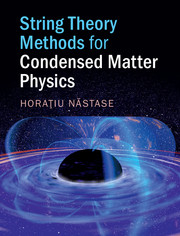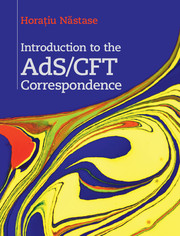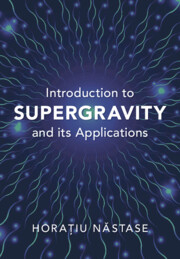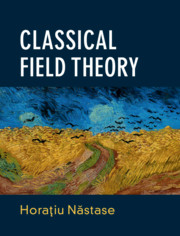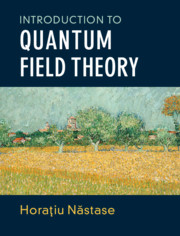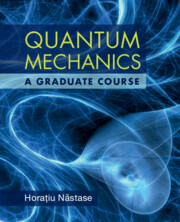String Theory Methods for Condensed Matter Physics
The discovery of a duality between Anti-de Sitter spaces (AdS) and Conformal Field Theories (CFT) has led to major advances in our understanding of quantum field theory and quantum gravity. String theory methods and AdS/CFT correspondence maps provide new ways to think about difficult condensed matter problems. String theory methods based on the AdS/CFT correspondence allow us to transform problems so they have weak interactions and can be solved more easily. They can also help map problems to different descriptions, for instance mapping the description of a fluid using the Navier–Stokes equations to the description of an event horizon of a black hole using Einstein's equations. This textbook covers the applications of string theory methods and the mathematics of AdS/CFT to areas of condensed matter physics. Bridging the gap between string theory and condensed matter, this is a valuable textbook for students and researchers in both fields.
- The applications of string theory methods to condensed matter physics is a topical subject, and readers will gain understanding of both fields
- No background knowledge is assumed so readers can come at the topic from different physics backgrounds
- Gives an overview of most string theory methods used for condensed matter, enabling the reader to start research in the area whether their background is in string theory or condensed matter
Reviews & endorsements
'This book is an excellent reference for students willing to bridge the gap between condensed matter physics and gravity by using holography.' Juan Maldacena, Institute for Advanced Study, New Jersey
'A nice survey of holographic techniques applied to condensed matter systems. It should provide a smooth entryway to novices desiring to work in this fascinating field.' Diego Trancanelli, Universidade de São Paulo
'In this, his second book on applied string theory, Nastase gives a wonderfully telescopic account of one of the most exhilarating developments in the field: holographic condensed matter. In 48 chapters, he takes the reader from the very basics of condensed matter and string theory right up to the very latest progress. With a number of well-constructed exercises in addition to detailed computations, it has a little bit for everyone from graduate students of both high energy and condensed matter physics to seasoned researchers looking to expand their horizons.' Jeff Murugan, University of Cape Town
'The gauge/gravity duality, which arose from studies in string theory in the late 1990s, is one of the most important modern tools to understand the behavior of quantum field theories at strong coupling. This book builds a bridge between the physics of condensed matter systems and the string theory ideas that can be used to understand them better. The book will be very useful both for students of condensed matter physics that want to apply the gauge/gravity duality to their field as well as for string theory students who want to understand better the connections between string theory and condensed matter systems.' David Berenstein, University of California
'In this ambitious advanced textbook, Horaţiu Năstase, a member of the Institute for Theoretical Physics at the State University of São Paulo, Brazil, aims to introduce graduate students and researchers to the application of string theory to condensed-matter physics. String Theory Methods for Condensed Matter Physics assumes previous graduate coursework in quantum field theory and some knowledge of solid-state physics and general relativity. However, Năstase writes that he intends for the book to be accessible to readers who are just beginning to learn about string theory and its relation to condensed matter. Each chapter includes exercises and a summary of important concepts.' Melinda Baldwin, Physics Today
Product details
September 2017Adobe eBook Reader
9781316853047
0 pages
0kg
48 b/w illus.
This ISBN is for an eBook version which is distributed on our behalf by a third party.
Table of Contents
- Preface
- Acknowledgments
- Introduction
- Part I. Condensed Matter Models and Problems:
- 1. Lightning review of statistical mechanics, thermodynamics, phases and phase transitions
- 2. Magnetism in solids
- 3. Electrons in solids: Fermi gas vs. Fermi liquid
- 4. Bosonic quasi-particles: phonons and plasmons
- 5. Spin-charge separation in 1+1 dimensional solids: spinons and holons
- 6. The Ising model and the Heisenberg spin chain
- 7. Spin chains and integrable systems
- 8. The thermodynamic Bethe ansatz
- 9. Conformal field theories and quantum phase transitions
- 10. Classical vs. quantum Hall effect
- 11. Superconductivity: Landau-Ginzburg, London and BCS
- 12. Topology and statistics: Berry and Chern-Simons, anyons and nonabelions
- 13. Insulators
- 14. The Kondo effect and the Kondo problem
- 15. Hydrodynamics and transport properties: from Boltzmann to Navier-Stokes
- Part II. Elements of General Relativity and String Theory:
- 16. The Einstein equation and the Schwarzschild solution
- 17. The Reissner-Nordstrom and Kerr-Newman solutions and thermodynamic properties of black holes
- 18. Extra dimensions and Kaluza-Klein
- 19. Electromagnetism and gravity in various dimensions. Consistent truncations
- 20. Gravity plus matter: black holes and p-branes in various dimensions
- 21. Weak/strong coupling dualities in 1+1, 2+1, 3+1 and d+1 dimensions
- 22. The relativistic point particle and the relativistic string
- 23. Lightcone strings and quantization
- 24. D-branes and gauge fields
- 25. Electromagnetic fields on D-branes. Supersymmetry and N = 4 SYM. T-duality of closed strings
- 26. Dualities and M theory
- 27. The AdS/CFT correspondence: definition and motivation
- Part III. Applying String Theory to Condensed Matter Problems:
- 28. The pp wave correspondence: string Hamiltonian from N = 4 SYM
- 29. Spin chains from N = 4 SYM
- 30. The Bethe ansatz: Bethe strings from classical strings in AdS
- 31. Integrability and AdS/CFT
- 32. AdS/CFT phenomenology: Lifshitz, Galilean and Schrodinger symmetries and their gravity duals
- 33. Finite temperature and black holes
- 34. Hot plasma equilibrium thermodynamics: entropy, charge density and chemical potential of strongly coupled theories
- 35. Spectral functions and transport properties
- 36. Dynamic and nonequilibrium properties of plasmas: electric transport, Langevin diffusion and thermalization via black hole quasi-normal modes
- 37. The holographic superconductor
- 38. The fluid-gravity correspondence: conformal relativistic fluids from black hole horizons
- 39. Nonrelativistic fluids: from Einstein to Navier-Stokes and back
- Part IV. Advanced Applications:
- 40. Fermi gas and liquid in AdS/CFT
- 41. Quantum Hall effect from string theory
- 42. Quantum critical systems and AdS/CFT
- 43. Particle-vortex duality and ABJM vs. AdS4 X CP3 duality
- 44. Topology and non-standard statistics from AdS/CFT
- 45. DBI scalar model for QGP/black hole hydro- and thermo-dynamics
- 46. Holographic entanglement entropy in condensed matter
- 47. Holographic insulators
- 48. Holographic strange metals and the Kondo problem
- References
- Index.

